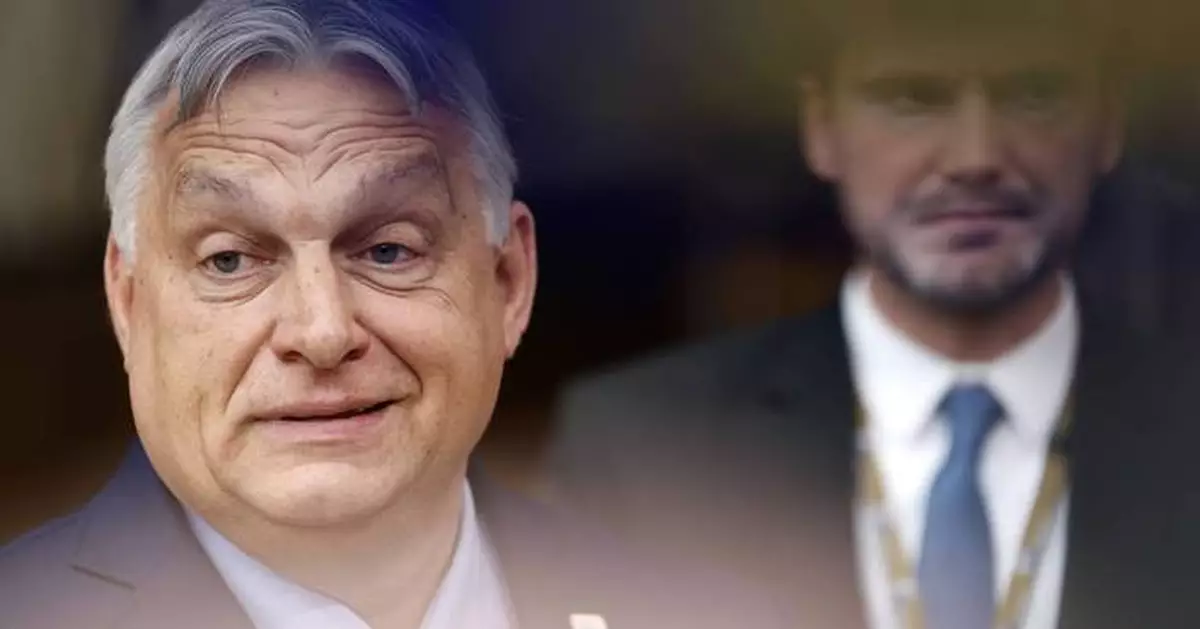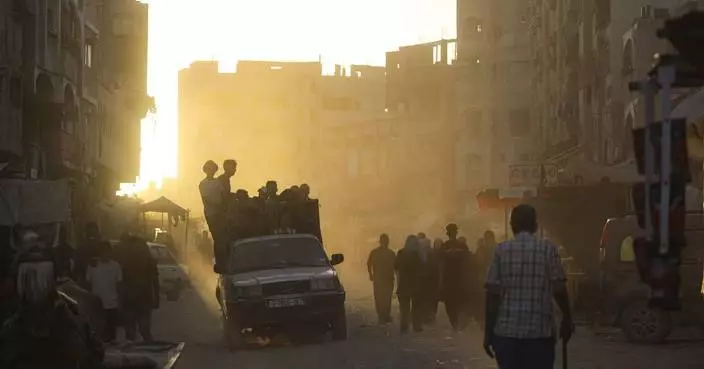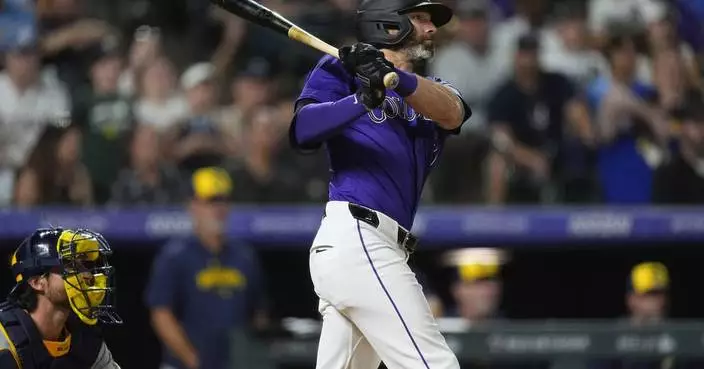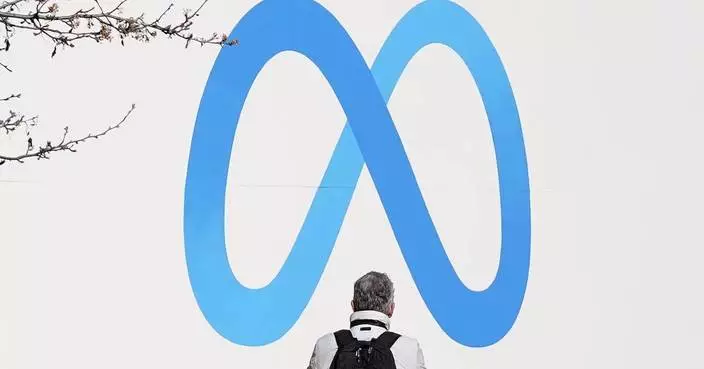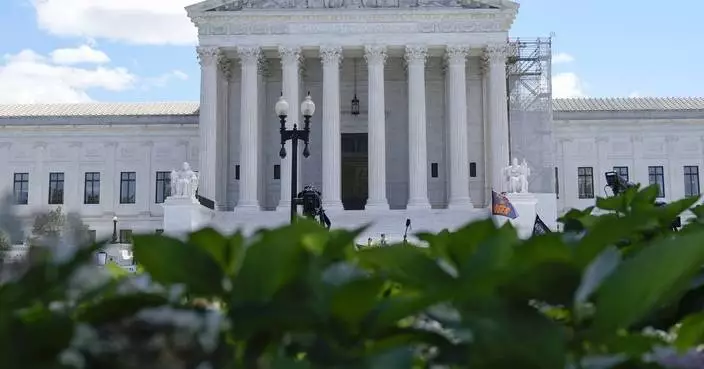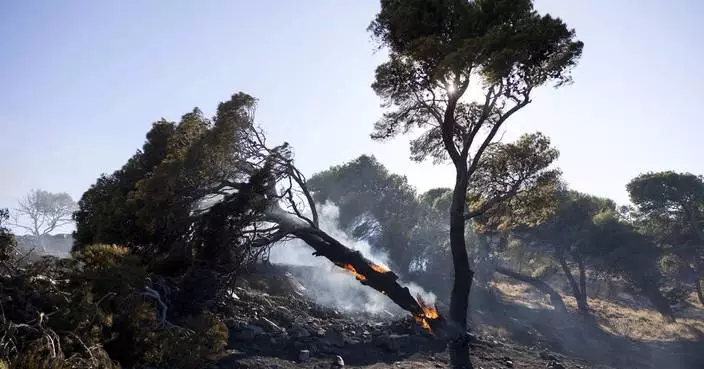BUDAPEST, Hungary (AP) — When Hungary takes over the helm of the European Union on July 1, many politicians in Brussels will have the same thing on their minds: whether populist Prime Minister Viktor Orbán will use the role to further his reputation as the bloc’s main spoiler.
Orbán in recent years has seemed to relish opportunities to block, water down or delay key EU decisions, routinely going against the grain of most other leaders on issues like the war in Ukraine, relations with Russia and China, and efforts to defend democracy and the rule of law.
His public opposition to EU policies and stances has long frustrated his partners in the bloc and pushed him to the margins of the continent's mainstream. Hungary's motto for its presidency — Make Europe Great Again — raised eyebrows for its resemblance to the famous tagline of former U.S. President Donald Trump.
The EU presidency rotates among its member countries, and while the post holds little real power, it does allow countries to put their priorities high on Europe’s agenda.
Now, as Hungary resides over the 27-nation bloc for the coming six months, it will likely keep up its anti-EU rhetoric, said Dorka Takácsy, a research fellow at the Centre for Euro-Atlantic Integration and Democracy.
But the timeline of its presidency — beginning with a lengthy summer break and a transitional period of forming a new European Parliament and executive commission — will give Budapest few opportunities to derail the bloc’s priorities significantly, she said.
"These six months are altogether not that long, which means that ... Hungary cannot do potentially much harm, even according to the critics," Takácsy said.
As Hungary's takeover approached, leaders in Brussels rushed to push through important policy decisions while Belgium was still at the helm. On Tuesday, for example, the EU launched membership talks with candidate countries Ukraine and Moldova.
Orbán has vocally opposed and threatened to block Ukraine's candidacy. His government has also held up EU efforts to supply Ukraine with badly needed funding.
Yet with Ukraine's accession process already initiated, Takácsy said, the most Hungary can do now under its presidency is delay further steps toward its EU membership, a process that in any scenario is likely to take many years.
“All the meaningful steps from the European side regarding Ukraine were already done," she said. “(A Hungarian) delay, according to most European leaders, is already calculated and being taken into consideration as if it’s something which is most likely going to happen.”
Orbán has long been accused of dismantling democratic institutions and violating the EU's standards on the rule of law, leading the bloc's legislature in May to call for the presidency to be taken out of Hungary's hands entirely.
In a resolution, the EU parliament argued that democratic deficiencies raised questions of “how Hungary will be able to credibly fulfill this task in 2024.” Two years ago, the European Commission froze billions of euros in funds to Budapest over concerns about democratic backsliding by the government.
But some Hungarian officials have stressed that they plan to act constructively during their presidency. Last week, Hungarian minister for EU affairs János Bóka told reporters that “we will be honest brokers, working loyally with all Member States and institutions.”
“Carrying out the functions of the presidency is our obligation, but we see it primarily as an opportunity," Bóka said. “At the beginning of the new institutional cycle, we can initiate a debate and set the agenda on issues that are important to us.”
Among the issues that Hungary has prioritized in its seven-point program is the enlargement of the EU in the Western Balkans for countries like Serbia, North Macedonia, Montenegro and Albania through a “merit-based” procedure.
Budapest has also vowed to strengthen the EU's external borders and step up against illegal immigration, and to address “demographic challenges” that involve an aging population in Europe — two priorities that reflect Orbán's image as a staunch opponent of immigration and defender of family values.
But after years of campaigns portraying the EU as forcing unwanted policies on Hungary — Orbán has repeatedly compared membership in the bloc to more than four decades of Soviet occupation of his country — he may find it difficult to restore goodwill among his EU partners.
“The Hungarian government has been using the image of Brussels as a punching bag,” Takácsy said. “Now it’s somewhat difficult to communicate that for these brief six months, we are basically the Brussels that Hungary is waging war and a freedom fight against.”
With some words of advice for Orbán before Hungary assumes its role, the prime minister of Belgium said the position “does not mean that you are the boss of Europe.”
"The presidency means that you're the one that has to make the compromise,” Alexander De Croo said to reporters in Brussels on Thursday. “Being in the position where you have to make the compromise is an interesting position to be in at least once in your life, so I can definitely recommend it to Mr. Orbán.”
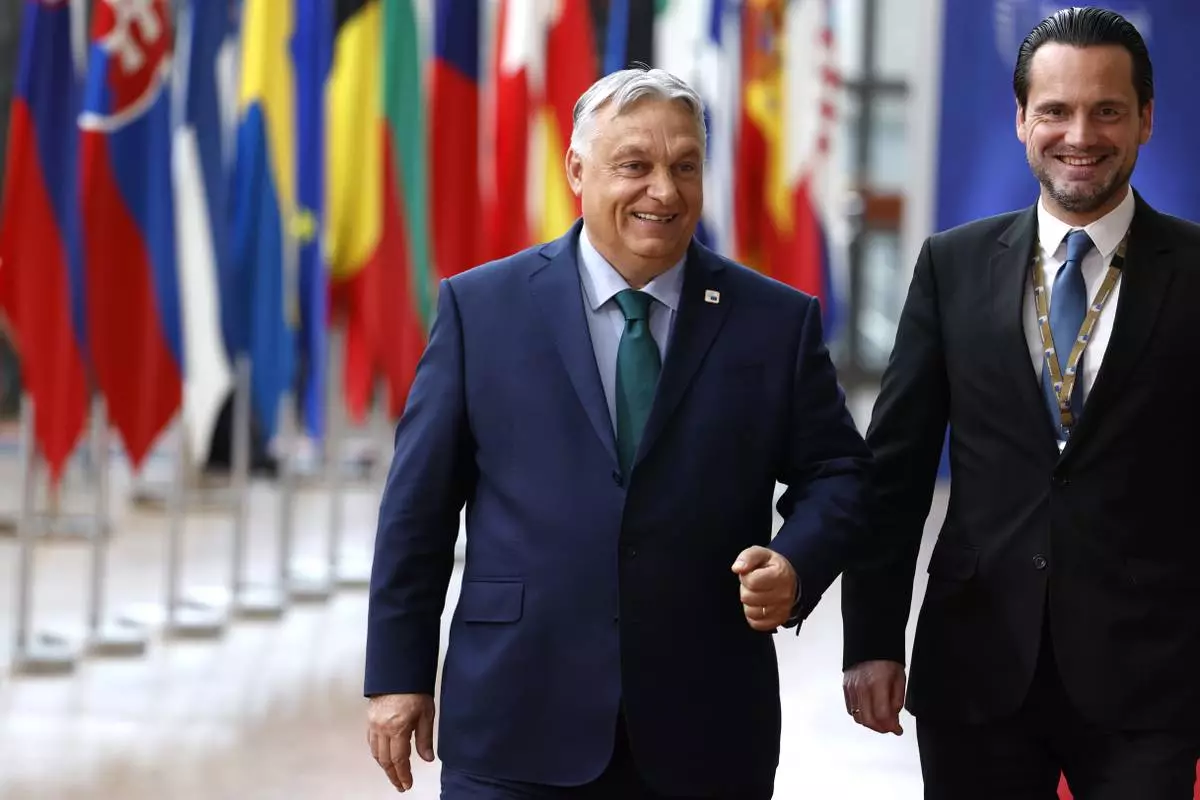
FILE - Hungary's Prime Minister Viktor Orban, left, arrives for an EU summit in Brussels, June 27, 2024. When Hungary takes over the helm of the European Union on Monday July 1, 2024 many politicians in Brussels will have the same thing on their minds: whether populist Prime Minister Viktor Orbán will use the role to further his reputation as the bloc’s main spoiler. (AP Photo/Geert Vanden Wijngaert, File)

FILE - Hungary's Prime Minister Viktor Orban, left, arrives for an EU summit in Brussels, June 27, 2024. When Hungary takes over the helm of the European Union on Monday July 1, 2024 many politicians in Brussels will have the same thing on their minds: whether populist Prime Minister Viktor Orbán will use the role to further his reputation as the bloc’s main spoiler. (AP Photo/Geert Vanden Wijngaert, File)
SEOUL, South Korea (AP) — North Korea said Tuesday it had test-fired a new tactical ballistic missile capable of carrying “a super-large warhead,” a claim quickly disputed by South Korean officials and experts who speculate the North likely fabricated a successful test to conceal a botched launch.
It's the second time that South Korea has questioned North Korea's claim on the development of new weapons in recent days, as the rivals are locked in heightened animosities over the North's testing activities.
The North’s official Korean Central News Agency said that Monday's test involved the Hwasongpho-11 Da-4.5 missile, which can carry a 4.5 ton-class warhead. It said the test was meant to verify the weapon's flight stability and hit accuracy at the maximum range of 500 kilometers (310 miles) and the minimum range of 90 kilometers (55 miles).
The test apparently refers to the two ballistic missile launches that South Korea said North Korea performed Monday.
Joint Chiefs of Staff spokesperson Lee Sung Joon said at a briefing later Tuesday that the second North Korean missile was found to have fallen on an uninhabited area near Pyongyang, the North's capital. He said he could find few previous test-launches by North Korea that have aimed at ground target sites.
“Regarding the North Korean assessment, we’re weighing a possibility of deception,” Lee said.
The South Korean military has said the second North Korean missile possibly traveled abnormally during the initial stage of its flight. It said if the missile exploded, its debris would likely have scattered on the ground.
The KCNA dispatch didn’t say from where it launched the new missile and where it landed. Unlike previous weapons tests, North Korea also didn't publicize any photos of Monday's test. The fact that it tested both the missile’s maximum and minimum ranges suggested North Korea performed two launches.
KCNA, citing North Korea’s Missile Administration, reported that North Korea will test-fire the missile again later in July to verify the performances of its simulated warhead at the medium range of 250 kilometers (155 miles).
Some experts say test-firing missiles at ground targets could be related to efforts to test how powerful warheads are to destroy underground bunkers and structures.
But Shin Jongwoo, a Seoul-based military expert, said the fact that North Korea hasn't disclosed any photos on the launches means that it's highly likely the North is trying to deceive the outsiders to cover up Monday's failed launches. He said North Korea likely launched an existing missile on Monday, not the new missile at it claimed.
Yang Uk, an analyst at Asan Institute for Policy Studies, said that Monday’s tests reflected North Korea’s push to acquire a variety of conventional weapons. But he also said if North Korea truly succeeded in hitting a ground target, it probably would have already published related images to brag about its achievements as it's done in the past.
Since 2022, North Korea has sharply accelerated weapons testing activities to enlarge its arsenal of nuclear-capable weapons designed to strike key sites in the mainland United States, South Korea and Japan. The North Korea-claimed ranges of the newly tested missile imply it targets South Korea. Experts say North Korea would ultimately want to use an expanded nuclear arsenal to increase its leverage in future diplomacy with the U.S.
Monday’s missiles test came a day after North Korea vowed “offensive and overwhelming” responses to a new U.S. military drill with South Korea and Japan. Five days before that test, on June 26, North Korea launched what it called a new multiwarhead missile in the first known test of a developmental weapon aimed at penetrating its rivals’ missile defenses. North Korea said the launch was successful, but South Korea dismissed the North’s claim as deception to cover up a failed launch.
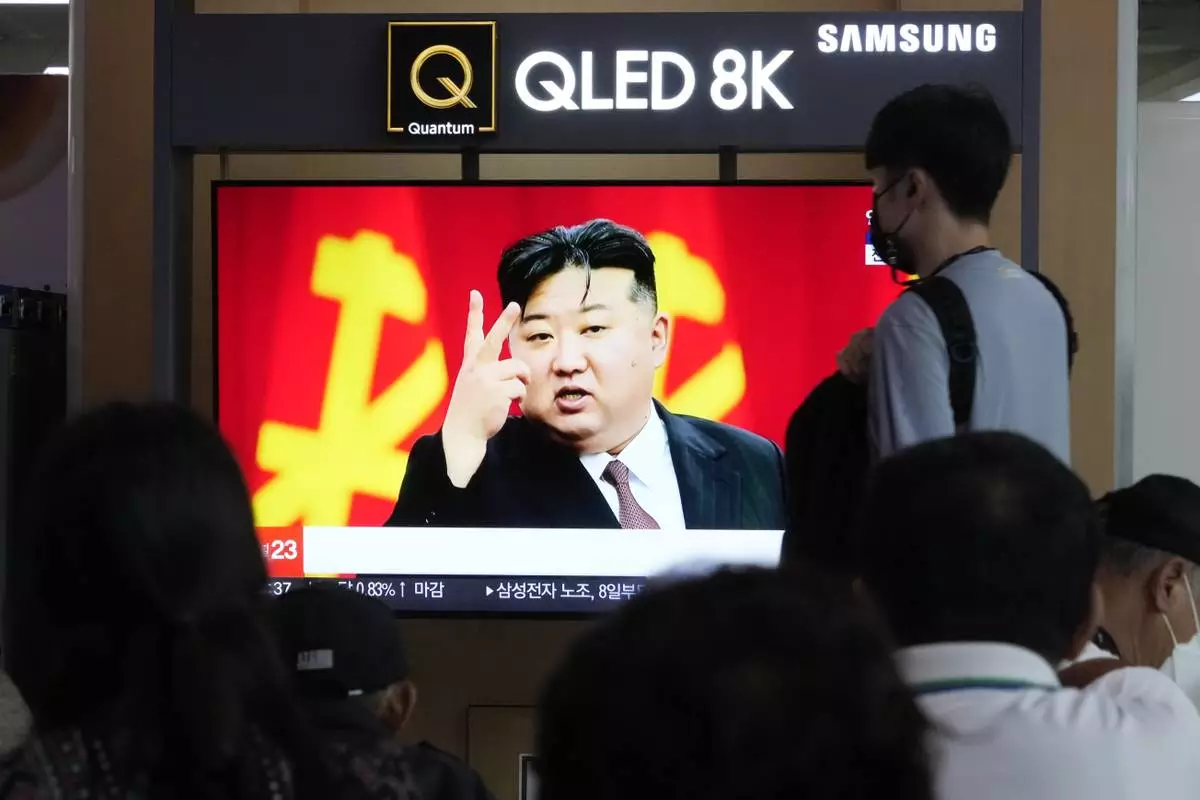
A TV screen shows an image of North Korean leader Kim Jong Un during a news program at Seoul Railway Station in Seoul, South Korea, Tuesday, July 2, 2024. North Korea said Tuesday it had test-fired a new tactical ballistic missile capable of carrying a huge warhead, as the country is pushing to modernize its weapons arsenal to cope with what it calls U.S.-led threats. (AP Photo/Ahn Young-joon)
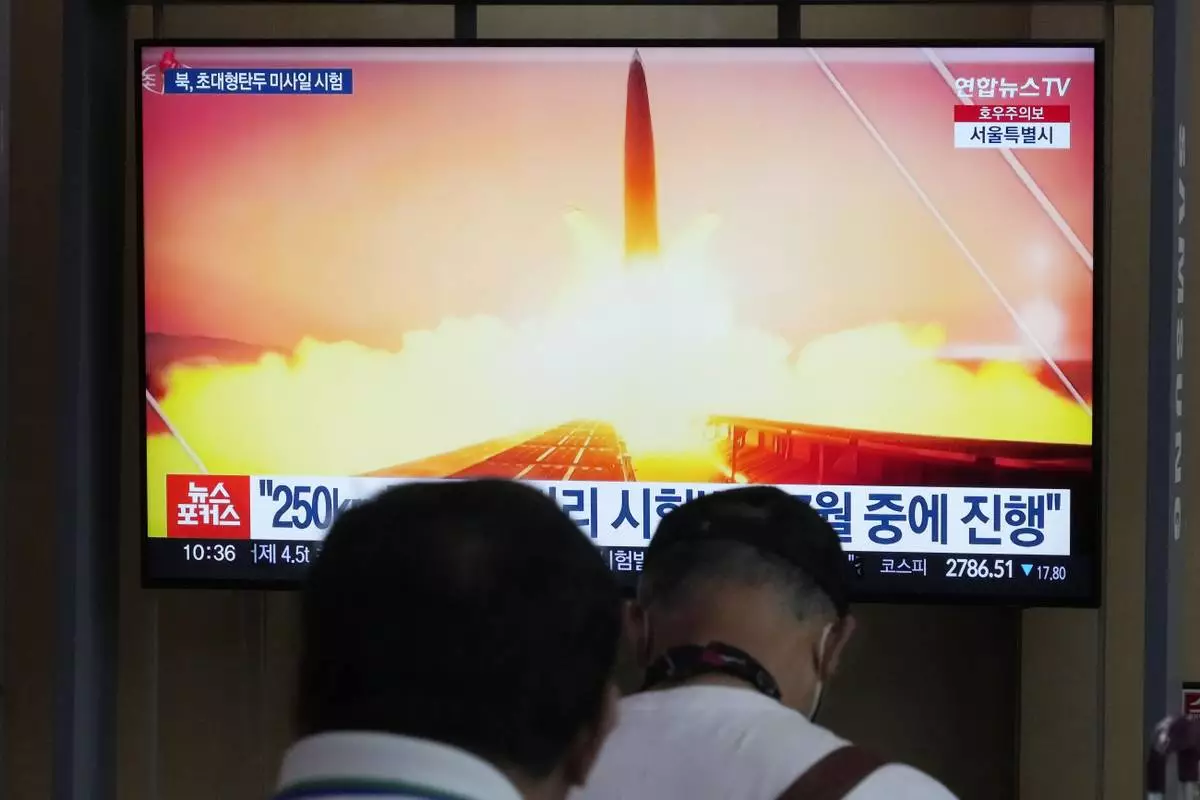
A TV screen shows a file image of North Korea's missile launch during a news program at Seoul Railway Station in Seoul, South Korea, Tuesday, July 2, 2024. North Korea said Tuesday it had test-fired a new tactical ballistic missile capable of carrying a huge warhead, as the country is pushing to modernize its weapons arsenal to cope with what it calls U.S.-led threats. (AP Photo/Ahn Young-joon)
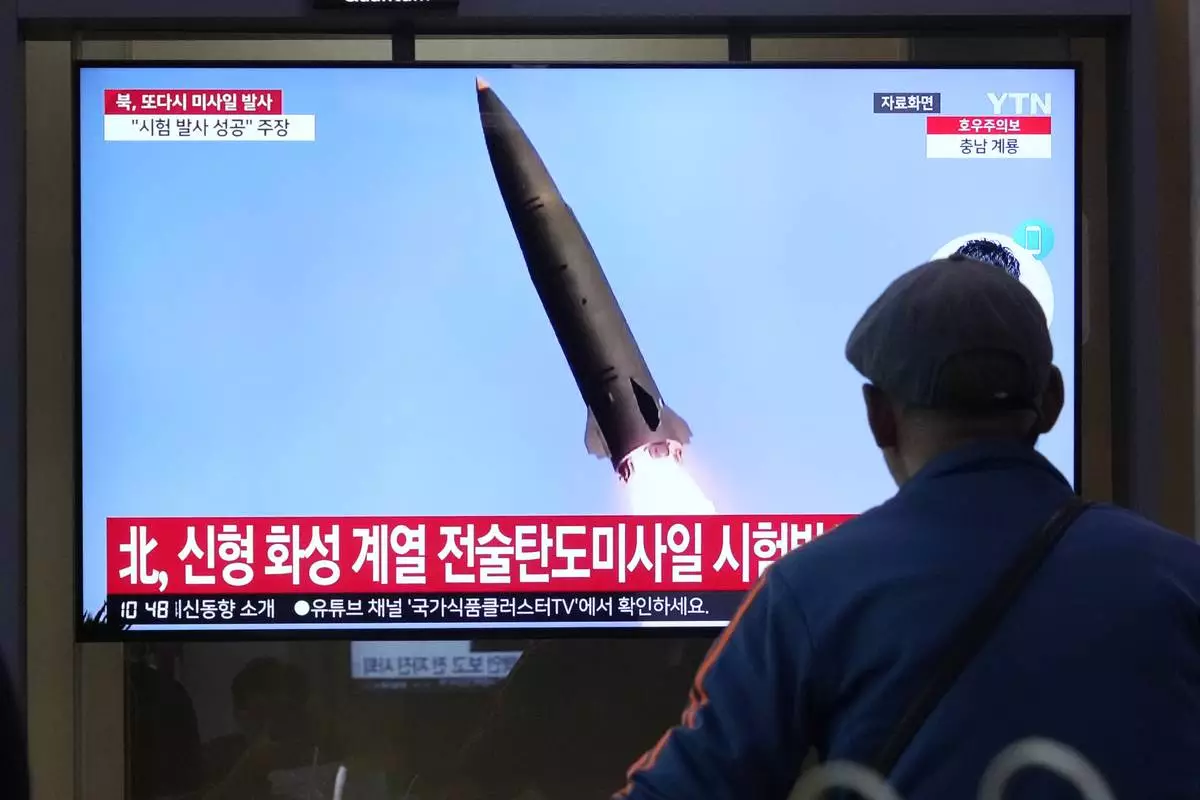
A TV screen shows a file image of North Korea's missile launch during a news program at Seoul Railway Station in Seoul, South Korea, Tuesday, July 2, 2024. North Korea said Tuesday it had test-fired a new tactical ballistic missile capable of carrying a huge warhead, as the country is pushing to modernize its weapons arsenal to cope with what it calls U.S.-led threats. (AP Photo/Ahn Young-joon)
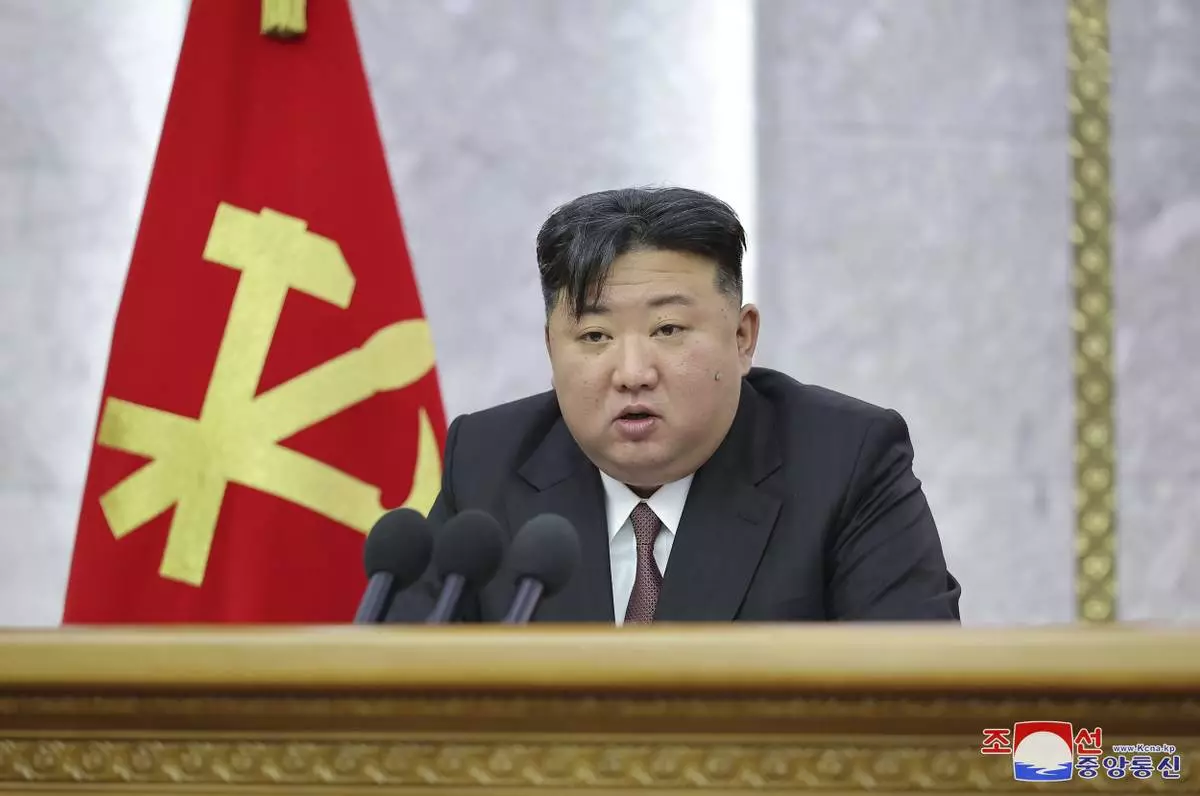
In this photo provided on Tuesday, July 2, 2024, by the North Korean government, North Korean leader Kim Jong Un delivers a speech during a meeting of Central Committee of the Workers' Party of Korea held from June 28 until July 1, in Pyongyang, North Korea. Independent journalists were not given access to cover the event depicted in this image distributed by the North Korean government. The content of this image is as provided and cannot be independently verified. Korean language watermark on image as provided by source reads: "KCNA" which is the abbreviation for Korean Central News Agency. (Korean Central News Agency/Korea News Service via AP)
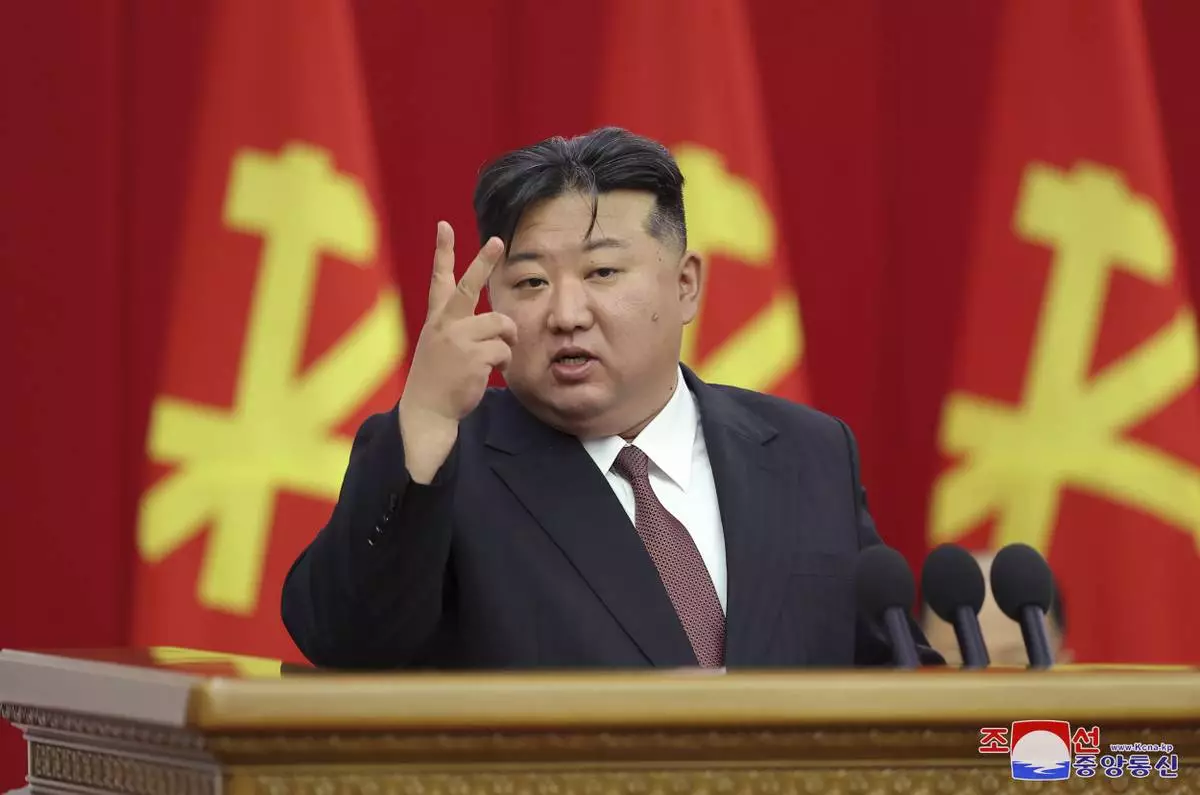
In this photo provided on Tuesday, July 2, 2024, by the North Korean government, North Korean leader Kim Jong Un delivers a speech during a meeting of Central Committee of the Workers' Party of Korea held from June 28 until July 1, in Pyongyang, North Korea. Independent journalists were not given access to cover the event depicted in this image distributed by the North Korean government. The content of this image is as provided and cannot be independently verified. Korean language watermark on image as provided by source reads: "KCNA" which is the abbreviation for Korean Central News Agency. (Korean Central News Agency/Korea News Service via AP)




